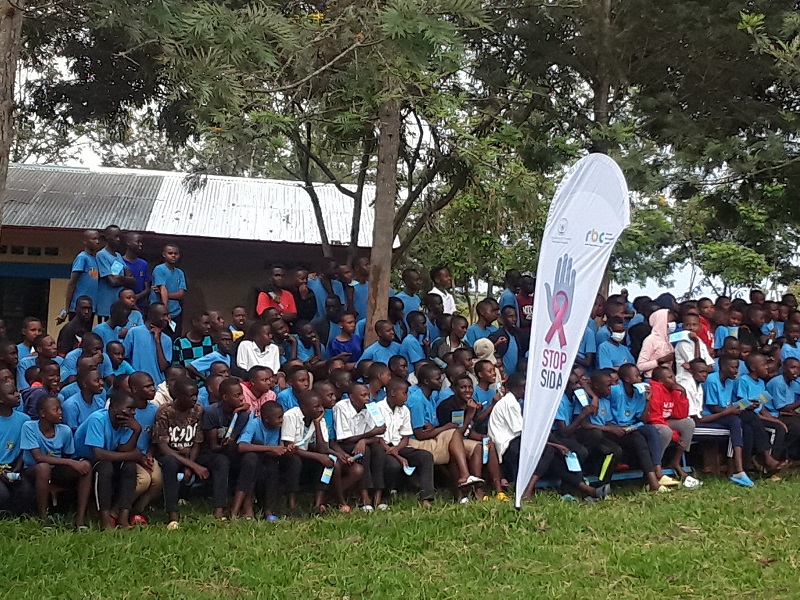
The youth listen during the outreach program in Nyagatare, April 22
Youth in Rwanda have been called upon to embrace the utilization and of HIV service delivery, to curb new infections. This was during a community outreach campaign by the Ministry of Health, through Rwanda Biomedical Center (RBC), intended to raise awareness and promote HIV services delivery, especially among youth.
The campaign which started April 21 is being conducted in the Districts of Nyagatare, Gatsibo, Rwamagana, Ngoma, Kirehe, Bugesera and Kigali city, under the theme “Young Rwandans taking the lead in HIV/AIDS response”.
According to Ernest Nkurunziza, the RBC Behavioural Change Communication Officer, recent statistics indicate that new HIV infections per year are enormous in the eastern province and the City of Kigali, mostly among youth.
It is recorded that around 19,2% of people are infected with HIV in Eastern province, 10,8% in the northern province, 17% in southern province and around 15% in the City of Kigali.
Despite all the efforts, HIV remains a public health problem in Rwanda, with new infections among youth, over 60% compared to other age blackets, especially among young girls below 16 years of age.
In partnership with the ministry of education and the Ministry of Youth and Culture, this campaign also focuses on young people in school and out of school.
Alexia Irabishoboye 19, a student at Karangazi Secondary school said that young people always shy away from health services about HIV prevention, including the use of condoms, to avoid the risk of contracting HIV/AIDS.
“We know that there is a program about free condom distribution and education on how to use them correctly and consistently, but many of us have not taken an initiative to learn. This is why many end up being infected at a premature age,” Irabishoboye said.
HIV prevalence is higher among girls, compared to boys between 20-24 years old (1,8% vs 0,6% respectively), often higher in urban settings compared to rural settings (0. 65% vs 0. 22%).
Alice Uwineza, (not real names) 26, a resident of Karangazi, finds it hard to explain the difficult times she went through, after finding out she was HIV positive.
“Had it not been the unshakeable hope through counselling, I would not have continued antiretroviral treatment. I was sadly disillusioned at first, but eventually confided my troubles to the counselors, then overcame the trauma.”, said Uwineza.
Statistics also indicate that only 82% of people on antiretroviral treatment have suppressed viral load, less than 1000 copies/ml (RPHIA 2019) in Eastern province, while the viral load suppression is more than 91% in the City of Kigali and other remaining provinces.
Despite current concern about the HIV scourge, Rwanda has made significant progress in the fight against the disease.
HIV prevalence decreased from 3.0% (RDHS-2015) to 2,6% (RPHIA-2019) among the general population aged between 15-49 years old and remains 3% among the population aged between 15-64 years old.


